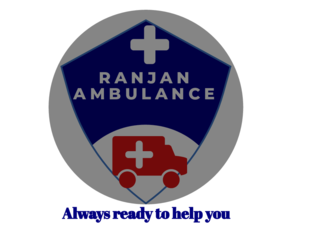Ambulance Services in Muzaffarpur: Bridging the Gap in Emergency Medical Care
Muzaffarpur, a prominent city in the state of Bihar, serves as a pivotal center for healthcare in the region. With a growing population and increasing urbanization, the city’s healthcare infrastructure plays a critical role in providing essential medical services to its residents and surrounding areas. Ambulance services, in particular, form an indispensable part of Muzaffarpur’s emergency medical response system, ensuring timely and efficient transport of patients in critical conditions. This comprehensive guide explores the various facets of ambulance services in Muzaffarpur, covering their organization, accessibility, challenges, and the crucial role they play in the local healthcare ecosystem.
Healthcare Infrastructure in Muzaffarpur
Muzaffarpur boasts a diverse healthcare infrastructure comprising government hospitals, private clinics, nursing homes, and diagnostic centers. These facilities cater to a wide range of medical needs, from routine healthcare services to specialized treatments and surgical interventions. The presence of renowned hospitals like Sri Krishna Medical College and Hospital (SKMCH) and other healthcare providers ensures that residents have access to comprehensive medical care within the city.
Importance of Ambulance Services
Ambulance services are vital for providing emergency medical care, serving as the first point of contact in critical situations. In Muzaffarpur, efficient ambulance services are essential for:
Prompt Response: Swift deployment of ambulances can significantly reduce the time taken to reach patients in emergency situations, thereby improving outcomes.
Emergency Care: Trained paramedics and emergency medical technicians (EMTs) on ambulances can administer life-saving interventions en route to hospitals, stabilizing patients before they reach medical facilities.
Patient Transport: Ensuring safe and timely transport of patients to appropriate medical centers where they can receive specialized treatment.
Coordination with Hospitals: Ambulance services play a crucial role in coordinating with hospitals to streamline patient admission and continuity of care upon arrival.
Types of Ambulance Services in Muzaffarpur
Ambulance services in Muzaffarpur are categorized based on ownership, capabilities, and the level of care they provide:
Government Ambulance Services:
108 Ambulance Service: Managed by the Bihar State Health Society, the 108 service offers round-the-clock emergency ambulance services. This toll-free service is accessible to anyone in need of immediate medical assistance and responds to a wide range of emergencies, including accidents, cardiac incidents, maternal emergencies, and more.
Government Hospital Ambulances: Major government hospitals in Muzaffarpur, such as SKMCH and the Muzaffarpur Sadar Hospital, operate their own ambulances to transport patients to and from the hospital premises.
Private Ambulance Services:
Individual Providers: Numerous private ambulance operators cater to Muzaffarpur and its surrounding areas. These providers offer a range of services, from basic patient transport to advanced life support (ALS) ambulances equipped with medical equipment and trained personnel.
Hospital-affiliated Services: Private hospitals and healthcare facilities in Muzaffarpur often have tie-ups with private ambulance services, ensuring swift response times and seamless patient transfers.
Specialized Services:
Neonatal Ambulances: Some hospitals in Muzaffarpur have specialized ambulances equipped to transport premature infants and babies requiring neonatal intensive care.
Air Ambulance Services: While less common, air ambulance services are available for transporting critically ill patients over long distances or to specialized medical facilities outside Muzaffarpur.
Accessibility and Availability
Accessibility to ambulance services is crucial for their effectiveness in responding to emergencies. In Muzaffarpur, several factors influence the accessibility and availability of ambulance services:
Response Time: Ambulance services strive to minimize response times, although factors like traffic congestion, distance from the incident, and operational logistics can affect response times during peak hours.
Geographical Coverage: Ambulance services in Muzaffarpur aim to provide comprehensive coverage across the city and surrounding rural areas, ensuring that emergency medical transport is accessible to all residents.
Infrastructure Challenges: Like many growing cities, Muzaffarpur faces infrastructure challenges such as narrow roads, traffic congestion, and inadequate street lighting in certain areas, which can impact ambulance operations.
Public Awareness: Educating the public about the appropriate use of ambulance services and when to seek emergency medical assistance can improve response times and ensure that ambulances are available for genuine emergencies.
Challenges Faced by Ambulance Services
Despite their critical role, ambulance services in Muzaffarpur encounter several challenges that impact their efficiency and effectiveness:
Traffic Congestion: Increasing vehicular traffic in Muzaffarpur poses a significant challenge to ambulance response times, particularly during peak hours and in densely populated areas.
Infrastructure Limitations: Narrow streets and limited access in some neighborhoods can hinder the timely movement of ambulances, affecting their ability to reach patients swiftly.
Resource Allocation: Ensuring an adequate number of ambulances, trained personnel, and medical supplies to meet the city’s emergency demands remains a constant challenge for service providers.
Financial Sustainability: Balancing the cost of ambulance services with the need to provide affordable emergency medical care is an ongoing concern, especially for privately operated services.
Training and Accreditation of Personnel
The effectiveness of ambulance services in Muzaffarpur hinges on the skills and training of their personnel:
Emergency Medical Technicians (EMTs): Trained to provide basic medical care, stabilize patients, and administer necessary interventions during transit to medical facilities.
Paramedics: Highly trained healthcare professionals capable of delivering advanced life support (ALS) interventions, including administering medications and performing complex medical procedures.
Continuous Training: Ongoing training programs ensure that ambulance crews stay updated with the latest medical protocols and practices, enhancing the quality of care provided during emergencies.
Coordination with Healthcare Facilities
Efficient coordination between ambulance services and healthcare facilities is crucial for seamless patient care in Muzaffarpur:
Hospital Protocols: Ambulance crews adhere to established protocols for patient handover, ensuring continuity of care upon arrival at hospitals or clinics.
Communication Systems: Effective communication systems enable real-time updates between ambulance crews and receiving hospitals, allowing healthcare providers to prepare for incoming patients.
Specialized Transfers: Ambulance services facilitate specialized transfers for patients requiring care at tertiary or specialized medical centers outside Muzaffarpur.
Future Directions and Innovations
Ambulance services in Muzaffarpur are evolving with advancements aimed at improving service delivery and responsiveness:
Technological Integration: Adoption of GPS tracking, mobile apps for emergency dispatch, and telemedicine capabilities to enhance response times and coordination.

